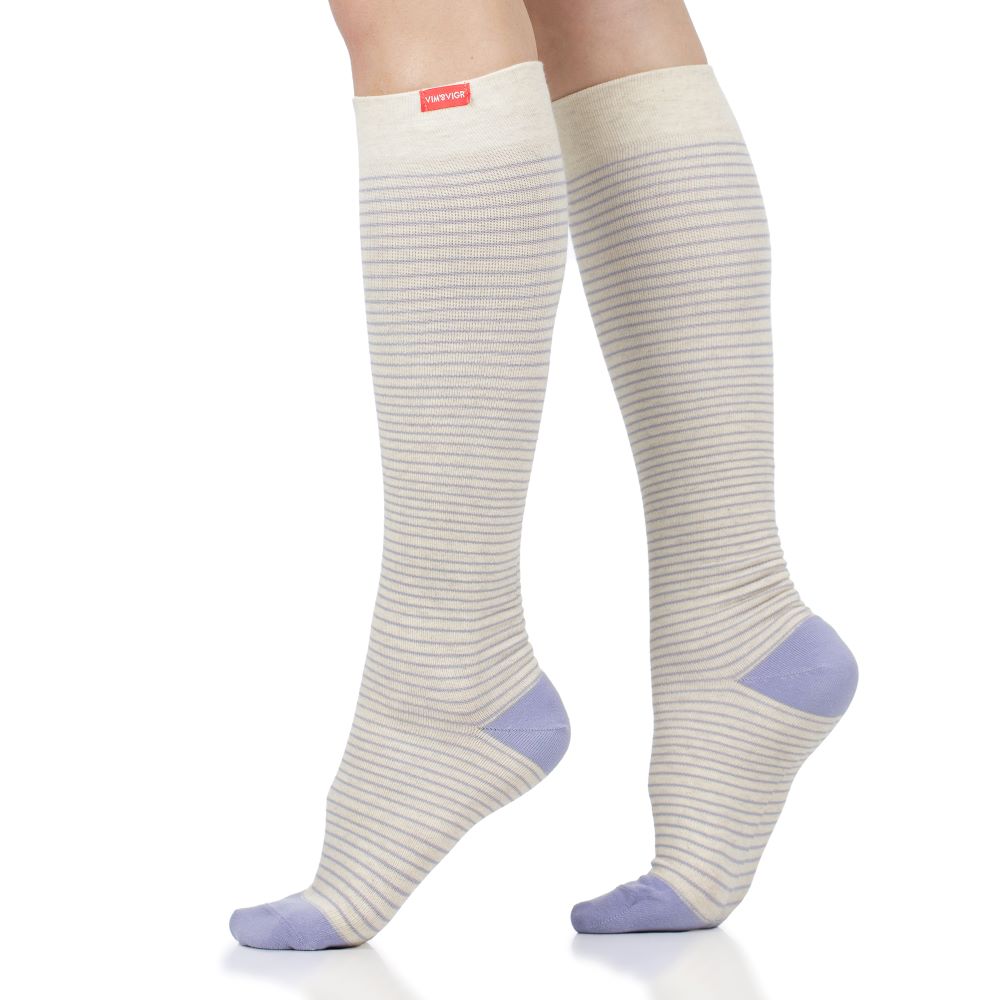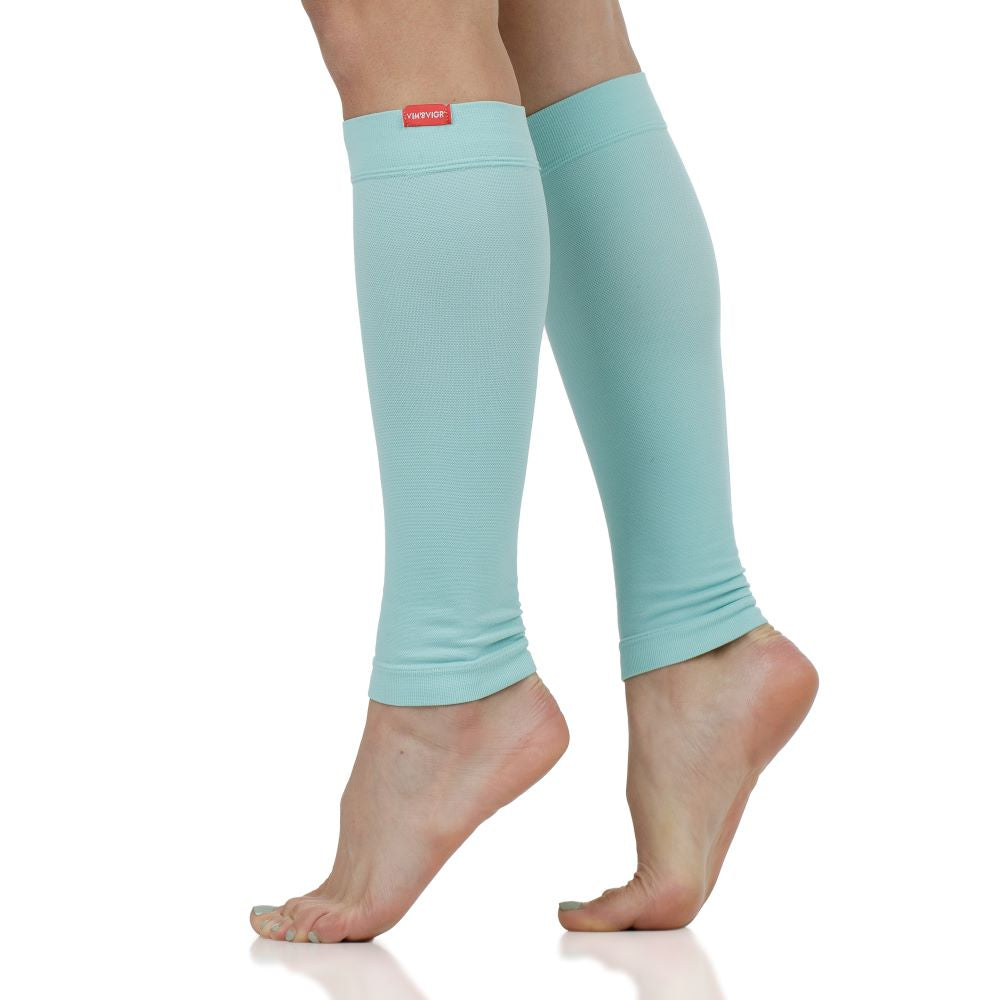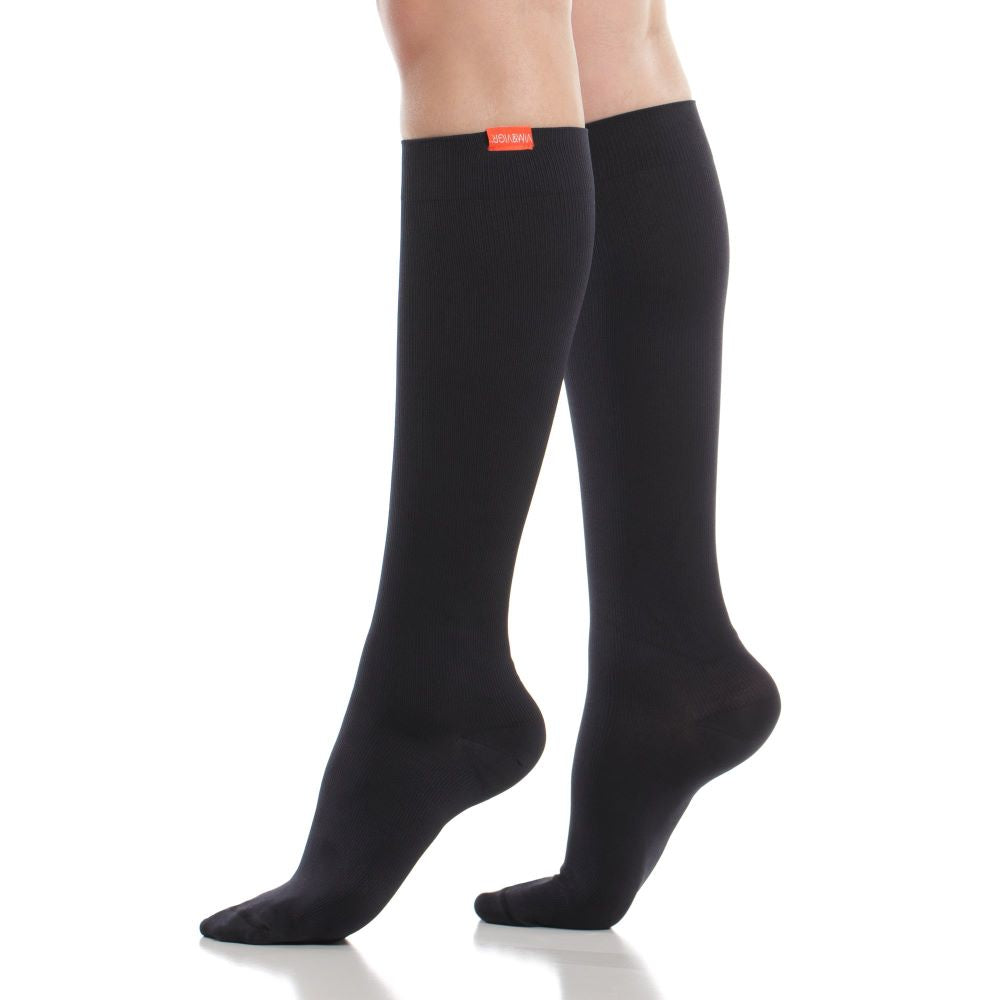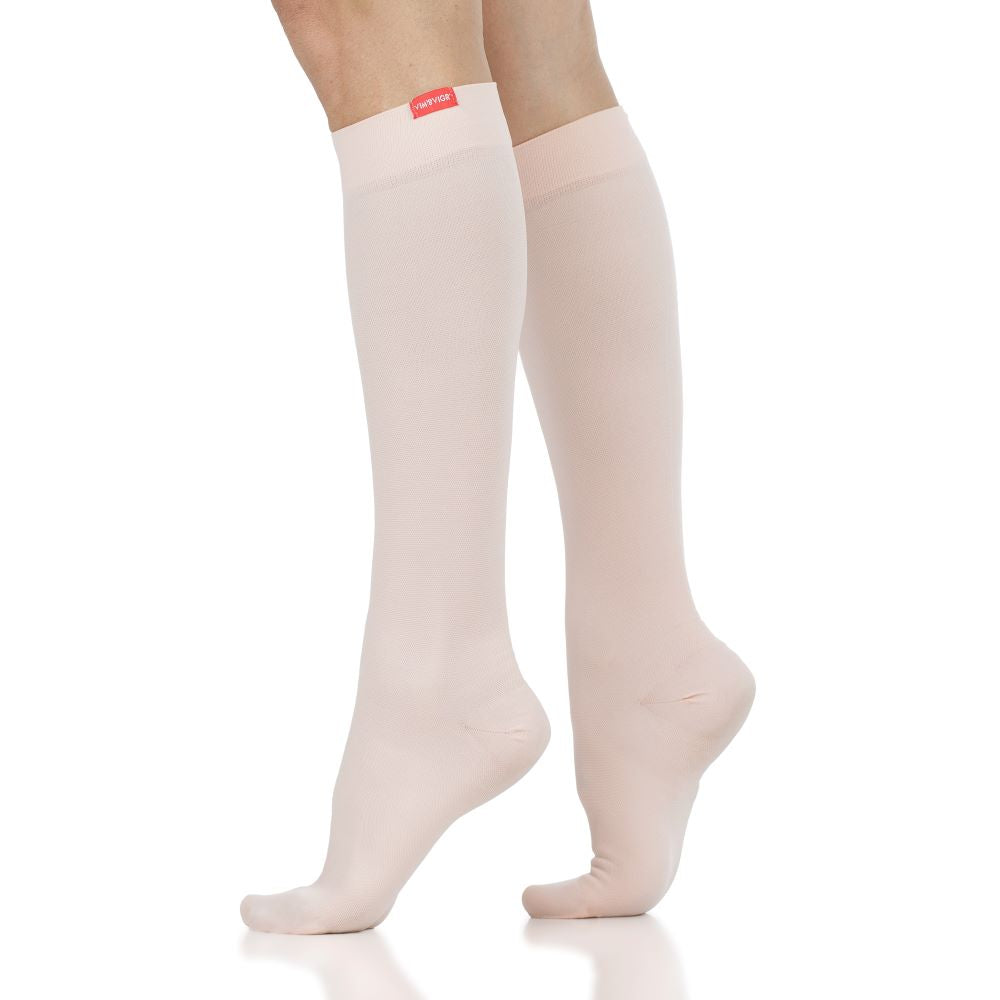How to Keep Compression Stocking from Rolling Down
Ah, the dreaded compression sock roll-down. How many of us have experienced the never-ending struggle between our socks and our skin to prevent them from slipping down all day? How often are you adjusting, tugging, and straightening your compression stockings throughout the day? The truth is that compression socks are meant to stay in place for as long as you're wearing them. To the point that you would forget all about them!
So, how do we ensure that those amazing compression socks you’ve been dreaming of for pain and swelling relief, actually stay on? How do you keep compression stockings from rolling down or from rolling at the top when you put them on?
This blog is all about getting rid of any snafus when it comes to wearing your compression socks and stockings. Read on to find out our tips for keeping them from rolling down as you wear them, and for some extra advice on how to best put on compression stockings to avoid them rolling at the top.

How to Keep Compression Socks from Rolling Down
Rolling down is one of the biggest issues when it comes to wearing compression socks. If you’re a runner or a hiker, the last thing you want is to feel those socks around your ankles in the middle of a day out! Equally, nurses, teachers and others who wear compression garments at work have no time to keep readjusting them. And it’s the same if you’re wearing your socks on a long flight or simply to prevent the formation of edemas and blood clots.
Here's how to enjoy all the benefits of compression socks with none of the rolling down discomfort!
Choose the Right Size Compression Socks
Usually, those wondering how to keep compression stockings from rolling down have bought the wrong size. That’s right, it’s that simple! You need to choose the right size of compression wear up front, ensuring that the socks or stockings you go for apply enough pressure to still be comfortable.
In other words, don’t just go down a size to make your socks too tight, either! We have a handy guide for choosing the right size of compression socks or stockings here. The best way to ensure an ideal fit is to take precise measurements and consult with your medical specialist if you’re buying the socks for a specific condition, too.
Additionally, you’ll need consider the pressure levels of compression socks. Our compression garments are sold in three levels:
- 15-20 mmHg;
- 20-30 mmHg;
- 30-40 mmHg.
If you’re unfamiliar with pressure levels, these determine the level of tightness of your socks. This is really important to get right, not just from a comfort perspective. The higher levels of compression (30-40 mmHg) are usually the medically prescribed compression socks, and we would not recommend a first-time wearer to buy them!

To get off to the best start with compression stockings, begin by experimenting at lower pressure levels such as 15-20 mmHg. If you find the perfect combination of sizing and pressure levels, your compression socks can provide optimal comfort and stay in place all day long!
Finally, don’t just buy one size of compression socks and think you’re all set for life. Of course, pressure levels may decline over time. But, with good care, you should get a long life out of good-quality compression garments. However, what happens if your leg swelling goes down (or up!)? Or if you lose or gain weight? These changes will also impact how well your socks fit. To keep compression socks from rolling down, check that your limbs haven’t changed shape significantly. And, if they have, adjust accordingly.
Wash Your Socks Properly After Every Wear
Another important tip for keeping your compression stockings from rolling down is to care for them well. This includes washing them regularly, ideally after every wear.
Keeping compression socks in good condition can be essential for keeping them from rolling down. Washing them regularly helps keep them free of dirt and bacteria that can accumulate over time, which can cause irritation and lead to slipping. Furthermore, it's important to use a gentle detergent on compression socks specifically formulated for delicate fabrics. Avoid putting compression socks in with other items that need to be cleaned at high temperatures.
Compression socks are typically made of breathable fabrics such as spandex, lycra, and elastane blends. These materials are specially designed to provide a snug fit without being too tight or restrictive. It's important to note that compression socks can degrade if not cared for properly. In time, the fabric can lose some its elasticity and the socks can become uncomfortable.
Merino wool and moisture-wicking Nylon are particularly flexible materials that can maintain their shape much better than other fabrics. Not only do they keep your legs dry, but they also regulate the temperature so you stay comfortable all day long! Plus, these materials are quick drying which makes them straightforward to clean and air dry – even when traveling!
Ensure That Your Legs Are Free of Dirt, Oil, Sweat, and Dead Skin
As we mentioned above, keeping your compression stockings or socks free of dirt and grime will ensure that they maintain their elasticity for longer. This means they’ll be less likely to roll down your legs, too.
Finally, as you may sweat and shed dead skin when wearing your compression socks, especially if you go out running and hiking in them, we recommend both washing yourself and your socks after every wear to keep the socks in their best shape.
Don’t Apply Lotion Under Your Compression Socks
When you wear your compression garments, make sure you haven’t just applied body lotions or oils. Ointments and lanolin applied to the calves and shins can rub off on the socks and may damage their elastic fibers. You could still wear a lotion before putting on compression socks, but you should ensure it’s not oil based.
Is it Time to Replace Your Compression Socks?
Any item of clothing, especially when worn often, will eventually show signs of old age. At this point, your compression socks may stop being the right size for you to get some of their benefits, such as reducing the risks of developing blood clots or deep vein thrombosis.
When you’ve had your compression socks for some time, start checking for wear and tear. The signs include the material stretching out too much when you put them on (especially when compared to previous wears), rolling and bunching, as well as wrinkling after you’ve just put them on (this is likely to happen with compression stockings).
How to Keep Compression Stockings from Rolling at the Top
Compression stockings can be a great help in improving blood flow and preventing swelling and discomfort. They are also medically prescribed for those recovering from surgery or for specific conditions. As with any type of stocking, however, getting them to fit just right can be a pain.
If you’re wondering how to keep compression stockings from rolling at the top, even after you’ve made sure you have the right size, there could be something else you’re not doing…

Spread the Stockings Evenly Over Your Legs
It’s important to practice putting on compression garments. They are meant to be tight fitting so you can get the benefits. But throwing them on really quickly will cause bunching and rolling down, no matter if you’re wearing the correct size or not.
Follow our detailed guide on how to put on compression socks first. Then, one of the key ways to ensure the stockings don’t roll down is to make sure the material is spread evenly over your legs. To do this, you should inch and pull at your stocking until it’s reached just below the knee. Then, move your hands gently over the length of your lower limbs to smooth out any kinks.
Don’t Stretch the Band When Putting On Your Compression Stockings
If you pull the top band wide when you put on your compression stockings, you’re causing it to lose its elasticity. This is why we always recommend starting by turning your stockings inside out, folding the sock onto itself and pulling it firmly onto your foot first. Then, unfold the stocking towards the knee without excessive pulling.
The less you stretch that top band, the longer your stockings will stay up without an issue!
Use an Aid to Keep Thigh High Compression Stockings Up
If nothing has worked for you, don’t despair. There are actually a lot of accessories you can use to help you keep compression stockings up. Especially thigh high models need some support. This includes garters and adhesives, which can also be useful for knee high stockings and socks.
How to Find Compression Socks That Stay Up
Finding good quality, resilient and long-lasting compression socks and stockings is the first step towards doing away with all this headache of them rolling down. Our range of different pressure levels of graduated compression socks gives you lots to choose from. Find the perfect size for you by carefully taking your measurements first. Next, consider the material that best suits your activity levels or intended use of the socks. Finally, try your compression socks for 1-2 hours at a time initially, until your ankles, calf muscles and legs in general get used to them. Then, the sky’s the limit!


















Leave a comment